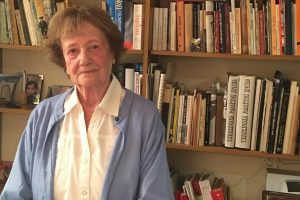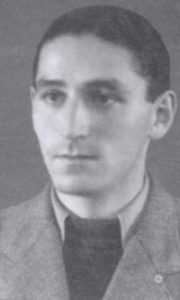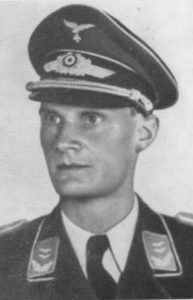 I read a book the other day, called “The Librarian of Auschwitz.” It is a true story about a woman named Dita Polachova , who at the age of 14 years was imprisoned at Auschwitz. I was moved by the sacrifices the people in her network made, as well as the many people I have read about in the past. We, in America, don’t often understand the need to sacrifice our own safety, and many people wouldn’t do it even if it was necessary. Dita was one of those people who would.
I read a book the other day, called “The Librarian of Auschwitz.” It is a true story about a woman named Dita Polachova , who at the age of 14 years was imprisoned at Auschwitz. I was moved by the sacrifices the people in her network made, as well as the many people I have read about in the past. We, in America, don’t often understand the need to sacrifice our own safety, and many people wouldn’t do it even if it was necessary. Dita was one of those people who would.
She was in charge of eight books that someone had smuggled into Auschwitz, the first sacrifice. It was something that could have cost the smuggler his life, but he saw value in the ability to get the books into the hands of the family camp, and the children’s school at Auschwitz. The family camp, and the coordinated children’s school was unique to Auschwitz. Most camps did not allow families to stay together. In fact, most of the children were killed upon arrival at the camps. The family camp and the children’s school were the  brainstorm sacrifice Freddy Hirsch, who was a Jewish athlete, one of the great runners. He was almost impossible to beat. I don’t know if that was what gave him some pull or not, but he made a sacrifice that turned out to be the ultimate sacrifice. Fredy Hirsch would not survive Auschwitz. It wasn’t because the books were found, but rather that the Nazis were taking away the family camp and children’s school. He took his own life. He assumed that the precious books would be lost, but he had underestimated Dita, who managed to get the books back in their hiding place, where they were not found by the Nazis.
brainstorm sacrifice Freddy Hirsch, who was a Jewish athlete, one of the great runners. He was almost impossible to beat. I don’t know if that was what gave him some pull or not, but he made a sacrifice that turned out to be the ultimate sacrifice. Fredy Hirsch would not survive Auschwitz. It wasn’t because the books were found, but rather that the Nazis were taking away the family camp and children’s school. He took his own life. He assumed that the precious books would be lost, but he had underestimated Dita, who managed to get the books back in their hiding place, where they were not found by the Nazis.
Dita outlived the Nazi reign of terror and went on to lead a happy life, despite the memories that would haunt her for the rest of her life. She married Arvid Harnack, an author, who with the writer Adam Kuckhoff and his wife Greta, who with Mildred Fish-Harnack brought together a discussion circle which debated political perspectives on the time after the National Socialists’ expected downfall or overthrow. From these meetings arose what the Gestapo called the Red Orchestra resistance group.
The Red Orchestra, Die Rote Kapelle in German, or the Red Chapel as it was known in Germany, was the name given by the Gestapo to anti-Nazi resistance workers during World War II. The members included friends of Harro Schulze-Boysen and Arvid Harnack in Berlin, as well as groups working independently of these intelligence groups, working in Paris and Brussels, that were built up on behalf of Leopold Trepper on behalf of the Soviet Main Directorate of State Security. The Red Orchestra was neither  directed by Soviet communists nor under a single leadership but a network of groups and individuals, often operating independently contrary to legend. About 400 members are known by name at this time. They printed illegal leaflets hoping to incite civil disobedience, helped Jews and opposition escape the regime, documented the crimes of the Nazi regime, and forwarded military intelligence to the Allies. The public perception of the “Red Orchestra” is characterized by the transfigurations of the post-war years and the Cold War.
directed by Soviet communists nor under a single leadership but a network of groups and individuals, often operating independently contrary to legend. About 400 members are known by name at this time. They printed illegal leaflets hoping to incite civil disobedience, helped Jews and opposition escape the regime, documented the crimes of the Nazi regime, and forwarded military intelligence to the Allies. The public perception of the “Red Orchestra” is characterized by the transfigurations of the post-war years and the Cold War.
The network of people willing to risk their own lives during the Holocaust years was extensive. From Jews who risked their lives to make life better in and out of the camps, to non-Jews who risked their lives to fight against the atrocities of the Nazi Regime and the Third Reich. These were brave people who knew that bravery isn’t about being fearless, but rather being brave despite the fear. Their stories deserve to be told. They deserve recognition, because in the face of the worst odds, they took action anyway. That is true bravery, and true sacrifice.


One Response to Sacrifice